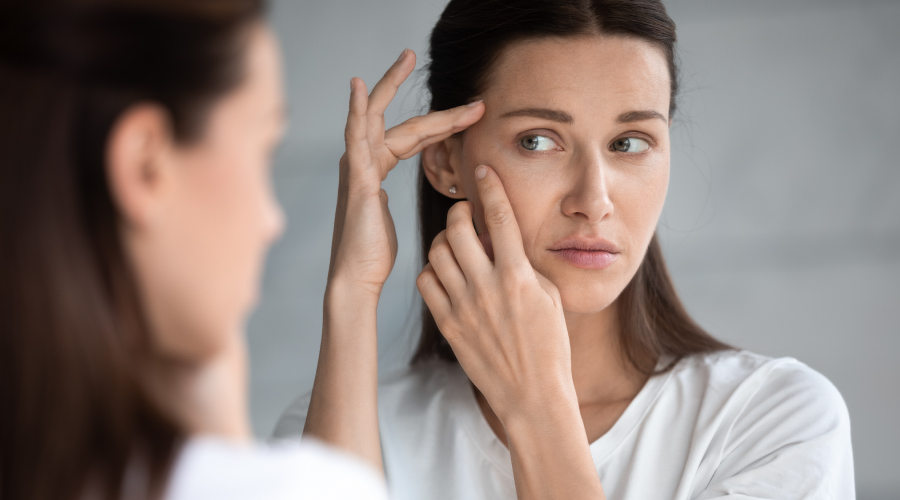

Warts are small skin formations that are not dangerous and appear on the skin as a result of the human papillomavirus (HPV). While they can develop anywhere on the body, warts on face are the most dangerous because of their visibility. The article describes the causes of warts on face, the types of warts on face, and the natural ways of getting rid of them.
Warts on Face Causes
Facial warts are caused by HPV subtypes that are transferred to the skin through breaks in the skin. The virus is transmitted directly from an infected person or by touching the objects that have been contaminated. Some of the factors that may increase the likelihood of developing warts on the face include; having a weak immune system, coming into contact with a person who has warts, and engaging in activities that may cause skin injuries, such as cuts or abrasions.
The following are the types of warts on face with characteristics:
Common Warts (Verruca Vulgaris): These are rough, raised tumours which may appear anywhere on the face. They are normally of skin colour and have a grainy texture.
Flat Warts (Verruca Plana): Flat warts are not as large and are not raised as high as common warts. They are usually a little elevated and may appear as groups. They are common in children and adolescents.
Filiform Warts: These warts are small and elongated, and may appear like a brush or a finger. They usually occur at the site of the mouth, nose or eyes.
Warts on Face Treatment
It is challenging to treat warts on the facial area because the skin on the face is very sensitive. Various medical and natural treatments are available:
- Cryotherapy: It involves using liquid nitrogen to freeze the wart and as a result, the wart drops off. It is a relatively fast and efficient treatment that is often carried out by a dermatologist.
- Topical Treatments: Such over-the-counter treatments containing salicylic acid can be rather effective. Doctors recommend more potent agent creams.
- Laser Treatment: This technique uses light to remove the wart tissue by directing a beam of light on the affected area. It is often used as the final option when all other forms of treatment have not yielded any positive results.
- Surgical Removal: In a few cases, warts have to be surgically removed by a professional.
Natural Treatment for Warts on Face: How to Get Rid of Them?
Some people prefer natural remedies to other ones, especially on the face as it is very sensitive:
- Apple Cider Vinegar: Soak a cotton swab in apple cider vinegar and apply it on the wart and then cover it with a bandage for a night. Vinegar is acidic in nature and this aids in the dissolution of the wart tissue.
- Garlic: Put the crushed garlic clove on the wart and let it stay there for several hours. Place a bandage over it and wear it for several hours a day. Garlic has antiviral properties that can be of great help in the treatment of warts.
- Banana Peel: Using a banana peel, rub the inside part of the banana peel in circular motion on the affected area. The enzymes that are found in the peel of the fruit seem to be involved in the degradation of warts.
- Aloe Vera: The fresh aloe vera gel should be applied on the wart. Aloe vera has the ability to heal and if applied regularly the wart will shrink.
- Tea Tree Oil: Using a cotton swab, dip it in the tea tree oil and apply it directly on the wart, preferably two drops. Tea tree oil is also antiviral and antiseptic and can be used for wart removal.
Wart on Face: How to Prevent it?
It is important to avoid the spread of the virus and avoid worsening the skin condition as most warts can be treated at home. Here are some tips:
- Keep the Area Clean: The affected area should be washed with mild soap and water and a high standard of hygiene should be maintained to prevent the spread of the infection.
- Use Separate Towels: One is advised to use a different towel for the face so that the virus does not spread to other members of the family.
If the wart does not disappear or change colour after the home remedies or if the wart becomes ugly, painful, or begins to bleed, you should consult a doctor. A dermatologist can give more specific advice and also ensure that the growth is indeed a wart and not a skin condition that is life threatening.
Conclusion
The face warts can be very irritating but the treatment of this disease is usually very successful. Knowing the types of facial warts, their causes, and the possible treatments that can be taken will help you in making the right decision. Whether you choose to seek medical help or try to find out how to remove warts on the face at home, the main principles are persistence and regularity.




